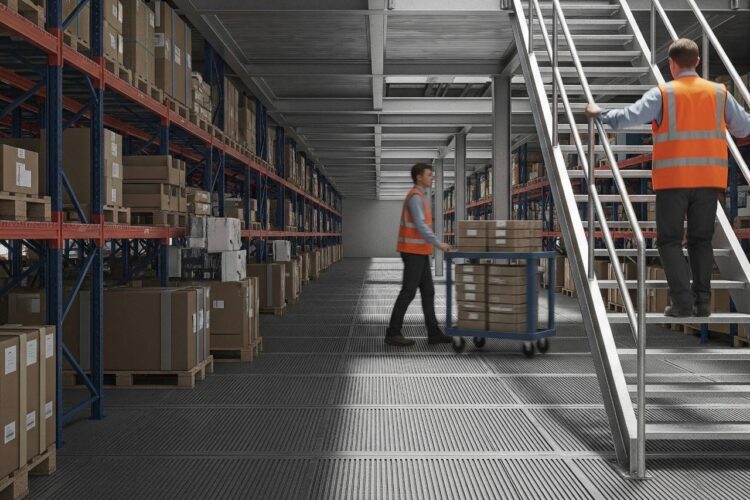
Understanding Dynamic Load vs Static Load in Mezzanine Design
A mezzanine is only as good as its structural support. Whether you’re planning a new build or evaluating an existing one, understanding the types of loads your mezzanine will bear is crucial. Two key terms often come up in this context: static load and dynamic load. While they may sound technical, these concepts form the backbone of safe, efficient mezzanine design — and knowing the difference can help prevent costly mistakes.
What Is Static Load?
A static load refers to a constant, unchanging weight on a structure, like stored inventory or fixed installations. In a mezzanine context, this includes:
- Shelving and racking systems
- Machinery or equipment that doesn’t move
- Stored goods or inventory that sits in place
- The mezzanine’s own weight (called the dead load)
Think of static load as the reliable, predictable weight your mezzanine must support around the clock. These loads don’t shift or create additional stress from movement, which makes them easier to account for during the design phase.
What Is Dynamic Load?
Dynamic load — also called live load — is the variable, moving weight that acts on a mezzanine floor during regular use. This includes:
- People walking or working
- Carts or trolleys being pushed
- Items being added, removed, or moved across the surface
- Vibration or motion from equipment
Unlike static loads, dynamic loads change over time as a result of movement or fluctuating forces. They’re less predictable, which means your mezzanine design needs a safety margin to handle these forces without risk of flexing, swaying, or structural fatigue.
Why the Distinction Matters in Design
To determine how much weight a mezzanine can safely hold, engineers evaluate both fixed and shifting loads. For example, a platform supporting heavy storage racks (static) might need less reinforcement than one supporting constant foot traffic and rolling carts (dynamic), even if the total weight is similar.
Designing for static load alone could lead to failure under movement. Likewise, overestimating dynamic load where none exists can result in unnecessary material costs. When done right, this balance supports a safe and smoothly functioning space.
Common Missteps and Their Risks
- Ignoring dynamic load in high-traffic areas can lead to structural instability, excessive vibration, or early wear and tear.
- Stacking too much static weight in one area — especially if it’s not evenly distributed — can result in floor deflection or localised failure.
- Underestimating point loads, like a single heavy pallet or machine, can cause damage even when overall weight limits seem within range.
Best Practices for Mezzanine Load Planning
- Always share your intended use with your designer or engineer — whether it’s for storage, people, machinery, or a mix.
- Ensure your mezzanine can handle both types of load with appropriate safety margins.
- For future flexibility, consider overengineering slightly to allow for changes in how the mezzanine will be used.
Final Thoughts
Understanding the difference between dynamic and static loads isn’t just a detail — it’s the foundation of mezzanine safety. Every footstep, pallet, and workstation introduces a unique type of stress, and designing with both in mind ensures your space performs as intended without compromise.
If you’re building a mezzanine, renovating one, or simply reassessing its limits, make load behavior part of the conversation from day one. The safety of your floor — and everyone using it — depends on it. Need guidance on mezzanine load design or assessment? Contact us — we’re here to help you build with confidence.



